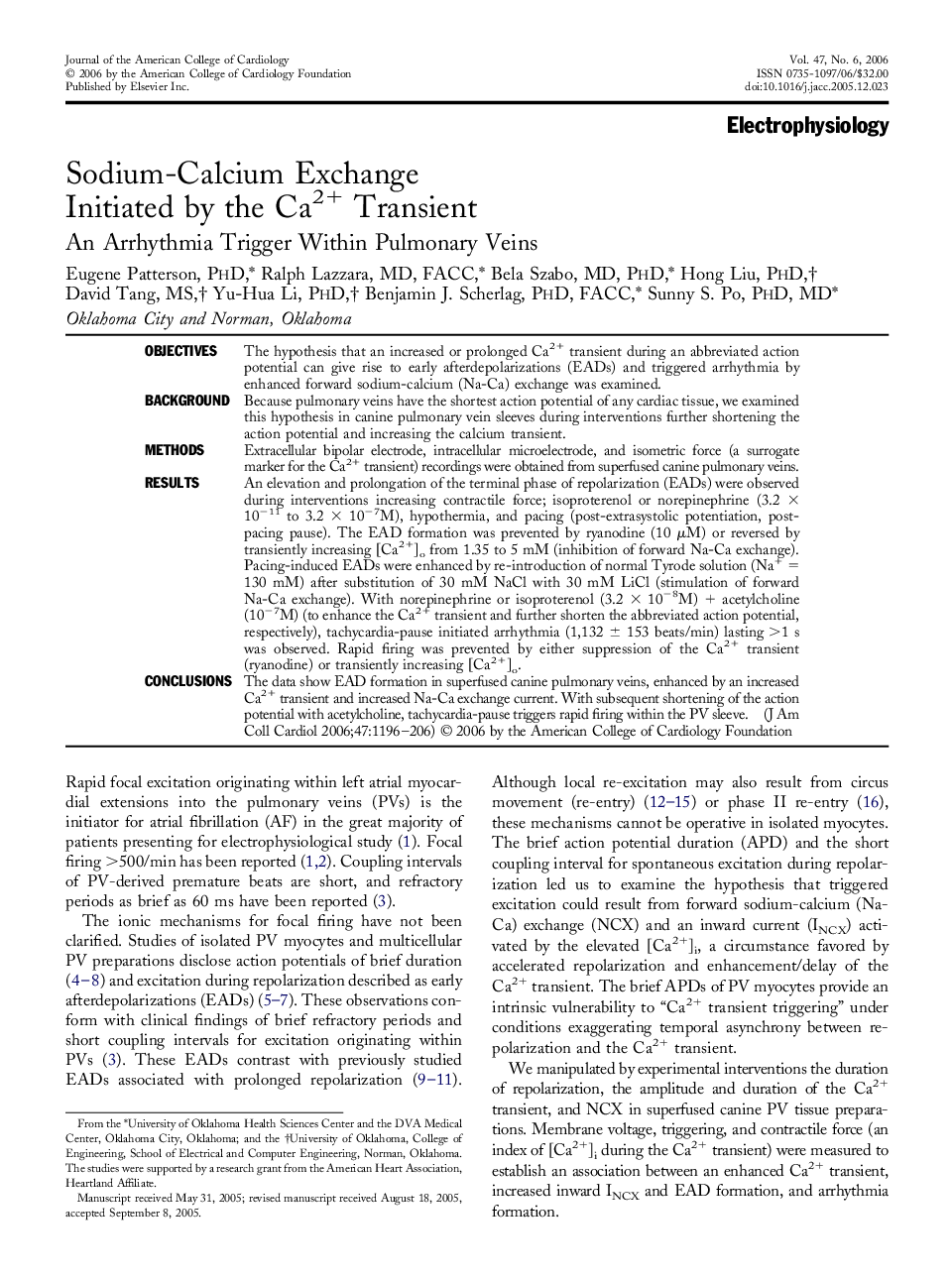| کد مقاله | کد نشریه | سال انتشار | مقاله انگلیسی | نسخه تمام متن |
|---|---|---|---|---|
| 2955024 | 1577517 | 2006 | 11 صفحه PDF | دانلود رایگان |

ObjectivesThe hypothesis that an increased or prolonged Ca2+transient during an abbreviated action potential can give rise to early afterdepolarizations (EADs) and triggered arrhythmia by enhanced forward sodium-calcium (Na-Ca) exchange was examined.BackgroundBecause pulmonary veins have the shortest action potential of any cardiac tissue, we examined this hypothesis in canine pulmonary vein sleeves during interventions further shortening the action potential and increasing the calcium transient.MethodsExtracellular bipolar electrode, intracellular microelectrode, and isometric force (a surrogate marker for the Ca2+transient) recordings were obtained from superfused canine pulmonary veins.ResultsAn elevation and prolongation of the terminal phase of repolarization (EADs) were observed during interventions increasing contractile force; isoproterenol or norepinephrine (3.2 × 10−11to 3.2 × 10−7M), hypothermia, and pacing (post-extrasystolic potentiation, post-pacing pause). The EAD formation was prevented by ryanodine (10 μM) or reversed by transiently increasing [Ca2+]ofrom 1.35 to 5 mM (inhibition of forward Na-Ca exchange). Pacing-induced EADs were enhanced by re-introduction of normal Tyrode solution (Na+= 130 mM) after substitution of 30 mM NaCl with 30 mM LiCl (stimulation of forward Na-Ca exchange). With norepinephrine or isoproterenol (3.2 × 10−8M) + acetylcholine (10−7M) (to enhance the Ca2+transient and further shorten the abbreviated action potential, respectively), tachycardia-pause initiated arrhythmia (1,132 ± 153 beats/min) lasting >1 s was observed. Rapid firing was prevented by either suppression of the Ca2+transient (ryanodine) or transiently increasing [Ca2+]o.ConclusionsThe data show EAD formation in superfused canine pulmonary veins, enhanced by an increased Ca2+transient and increased Na-Ca exchange current. With subsequent shortening of the action potential with acetylcholine, tachycardia-pause triggers rapid firing within the PV sleeve.
Journal: Journal of the American College of Cardiology - Volume 47, Issue 6, 21 March 2006, Pages 1196–1206